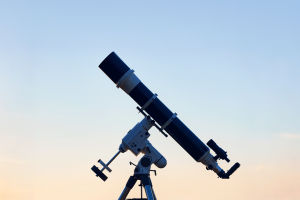The initial singularity refers to the state of the universe at the very beginning of time, when all matter, energy, and spacetime were compressed into an infinitely small point of infinite density and temperature.
This concept is key to understanding the universe's origins, as it is thought to have existed before the BigBang, triggering the start of cosmic expansion.
1 The Initial Singularity's Age
The initial singularity is theorized to have existed approximately 13.8 billion years ago, right before the BigBang unleashed the universe into existence. This time frame marks the very first moment of space and time, the starting point for everything that exists in the cosmos today.
The universe as we know it — galaxies, stars, planets, and even light — all trace their origins back to this infinitesimally small point. This moment is referred to as the cosmic birth, and it is the bedrock of much of modern cosmology.
2. Extreme Conditions, Extreme Effects
At the initial singularity, the universe was concentrated into a point of infinite density and temperature. This singularity defies our understanding of physics because, under such conditions, both space and time were compressed into something unimaginable. The laws of physics, particularly general relativity, break down at this extreme state.
As a result, it becomes nearly impossible to apply modern physics or even conceptualize what occurred in this dense, hot, and incredibly minuscule space. The very concept of time and space as we know it is theorized to have had no meaning in this primordial state.
3. A Key Player in Cosmology
The initial singularity is a cornerstone in the study of cosmology. It's central to our understanding of the origin of the universe, serving as the foundation for the theory of the BigBang. The singularity is believed to have undergone a rapid expansion, known as cosmic inflation, leading to the observable universe.
It helps scientists understand the dynamics of how the universe evolved over time, from an infinitely small point to the vast, ever-expanding universe that we observe today. The study of this singularity, along with the aftermath of the BigBang, helps explain the formation of galaxies, star systems, and even the cosmic microwave background radiation that fills the universe.
4. The Mystery of the Singularity
The true nature of the initial singularity remains one of the most profound mysteries in physics. Despite being a crucial element in understanding the universe's origin, it challenges current scientific models of space-time. Because of the extreme conditions at play, many aspects of the singularity defy our conventional understanding of physics.
For example, at such high densities, the gravitational forces would have been so intense that time itself may have been stretched, resulting in a warped perception of time and space. As such, the singularity forces physicists to reconsider the very nature of reality. Whether the universe began from a singular point or if this is part of an even larger cosmological process is still debated.
5. Competing Theories About the Singularity
In an attempt to understand the singularity, scientists and physicists have developed a number of competing theories that attempt to explain what happened before and at the point of singularity. One major concept is quantum gravity, a field that seeks to merge quantum mechanics (which governs small particles) and general relativity (which governs massive objects).
Quantum gravity could provide a way to describe the extreme conditions at the initial singularity and offer insight into how the laws of physics behave in such environments. Another major idea is string theory, which suggests that the fundamental particles in the universe aren't points but rather vibrating strings.
Understanding the initial singularity remains a key frontier in the quest to unlock the secrets of the universe, and as scientific advancements continue, we may eventually unravel the mysteries that have eluded us for centuries!

